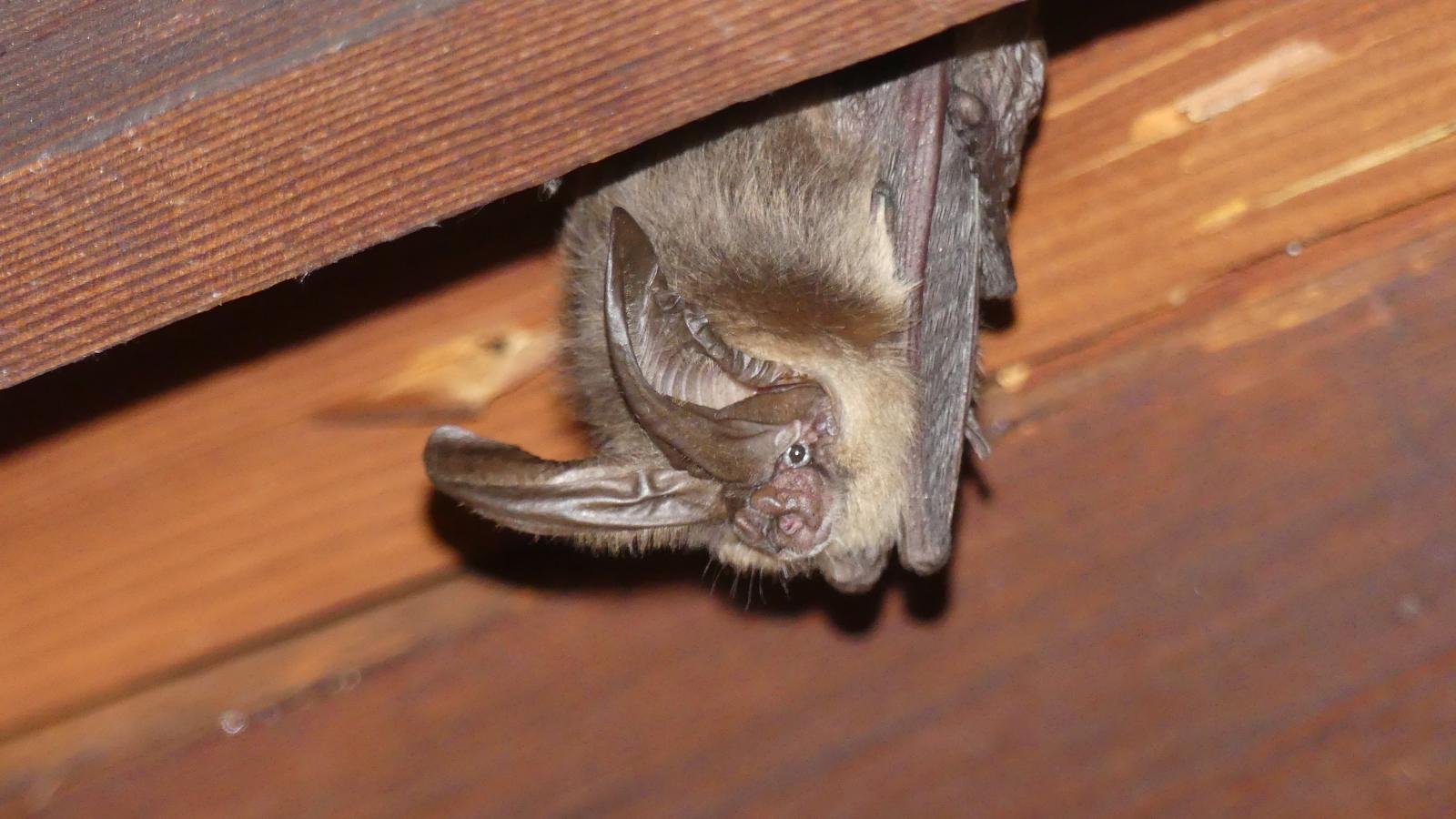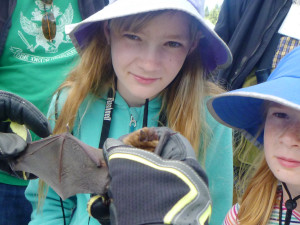
Bats are Beneficial
When Midpen acquired the newly opened Bear Creek Redwoods Preserve property, we were thrilled to discover a large bat colony. Many of the bats were roosting in the rundown abandoned buildings of Alma College, which closed in 1969. Thanks to Measure AA funding, the Alma College site was open to public access and restored, including building better homes for these roosting bats.
“These bats are extremely beneficial to the environment,” Midpen biologist Matt Sharp Chaney said. “If you don’t like mosquitos, you should really like bats. Bats eat insects — lots of them!”
Important notice
Do NOT touch bats. Some bats may carry diseases, including rabies, that can be transmitted to humans. Avoid all contact. Humans can also spread diseases, like white nose syndrome, to bats. If you come in contact with a bat, seek immediate medical attention.
Repairing the White Barn
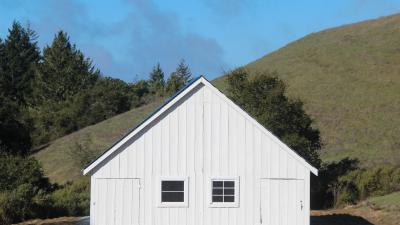
Located in what is now La Honda Creek Open Space Preserve along the Cielo Trail, a 160-year-old barn was in dire need of structural repairs for preservation and public safety. Rust, missing windows, insect and water damage and a weakened foundation were taking a toll. Staff stabilized and repaired the barn while improving roosting habitat for bats.
At the request of Midpen biologists, the interior of the barn was enhanced specifically for bats with special boxes placed in the rafters for roosting, windows allowing bats to enter and exit the barn and a way to collect and remove their guano.
Surveys have found eight different species of bats in the immediate area of the barn, including Townsend’s big-eared bat, pallid bat and western red bat, all of which are California state species of special concern.
“Man-made habitats for wildlife aren’t perfect, but they are a good interim solution until more natural habitats, including large snags and hollowed trees, are protected and enhanced,” Midpen biologist Matt Sharp Chaney said.
Building the "Bat Cave"
To care for the bats, Midpen turned an old carport into a new "bat cave” and lured them to their new home with "bat signals," recordings of bat calls. You’ll be able to watch bats flying in and out at dawn and dusk!
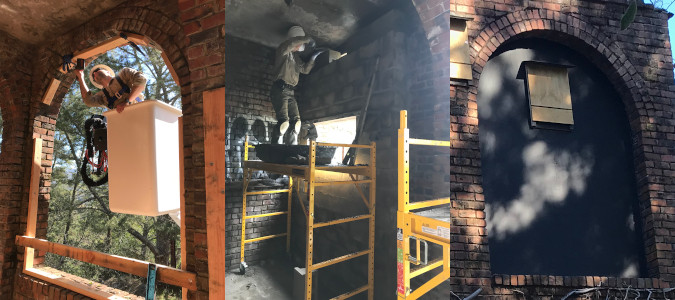
The bat cave was built out of a open-air, brick carport left over from the old Alma College (learn the history). Midpen staff filled the open areas with cinder block walls, so that the bats will have a nice, dark cave to roost in during the day. Not only will it be dark, but it will also be very warm. Ideally the interior will get as hot as 85-105 degrees F, which is perfect for bats when they are raising their young in the summertime.
Staff built narrow gates in the walls that we can adjust to regulate the airflow, while also allowing the bats to fly in and out. Sensors measure the temperature in the cave and let us know if we need to adjust the gates to keep the temperature at an optimal range for the bats.
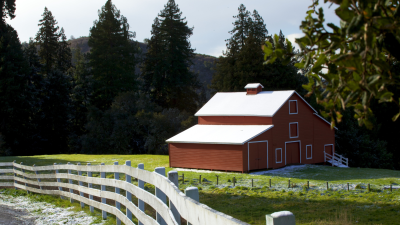
Repairing the Red Barn
The iconic red barn in Midpen’s La Honda Creek Open Space Preserve, as seen from Highway 84, serves as a visual gateway to the rural San Mateo County Coastside. During the fall of 2022 the red barn received a new roof that will help the 120-year-old historic structure continue withstanding the elements, including better protection from potential fires.
The barn was originally built around 1900 by the Weeks family for housing ranch animals and storing equipment and hay. The barn is also important to Midpen’s work in protecting and restoring the natural environment, as the only known location in all of Midpen’s lands and throughout the San Francisco Peninsula where rare pallid bats successfully raise their young each year.
This California species of special concern group together in a maternity roost, giving birth to their pups in the barn’s safe and warm environment where they are cared for until they learn to fly and hunt alongside their mothers by late summer. Pallid bats are unique for their ability to hunt prey (including scorpions!) from the ground, making them partial to open grassland environments like those surrounding the red barn.
“Bats are an essential part of a healthy ecosystem. They help regulate insect populations, including agricultural pests. According to Bat Conservation International, the annual insect control bats provide is worth an estimated $23 billion to U.S. agriculture. They are a natural insecticide.” —Midpen biologist Matt Sharp Chaney
Bay Area Bats Demystified
Join Midpen biologist Matt Sharp Chaney online to learn about bats living among us in the Bay Area! Discover their fascinating life cycles, learn about the local efforts to help protect our bat neighbors and find out how you can help.
Types of Bats
There are many different species of bats that call Bear Creek Redwoods Preserve home. Here are two:
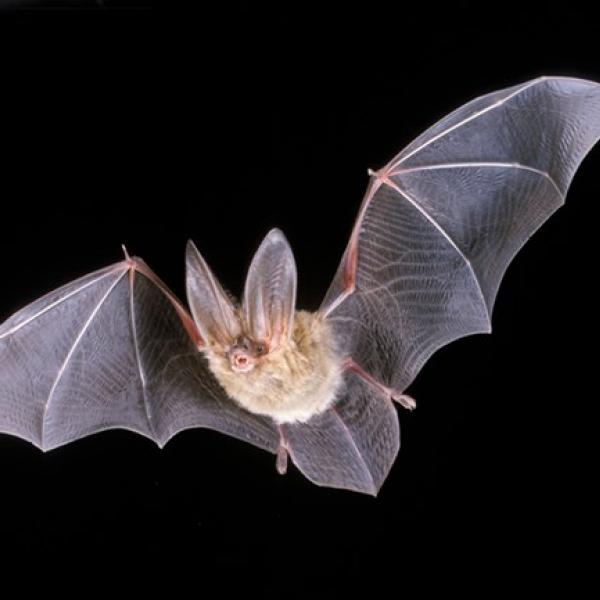
Townsend's Big-Eared Bats
(Corynorhinus townsendii)
Native species
- Light grey and brown fur
- Primarily eat of moths and butterflies
- Average lifespan is 16 years, but can live up to 30 years
- Townsend's bats have extremely long ears to funnel sound into ear canal
- When it's roosting or hibernating, a Townsend's bat will curl its ears up so that they look like ram's horns
- Have the unique habit of forming maternity colonies in the summer. Males are solitary during the maternity period
- Townsend's big-eared bats are a California Species of Special Concern
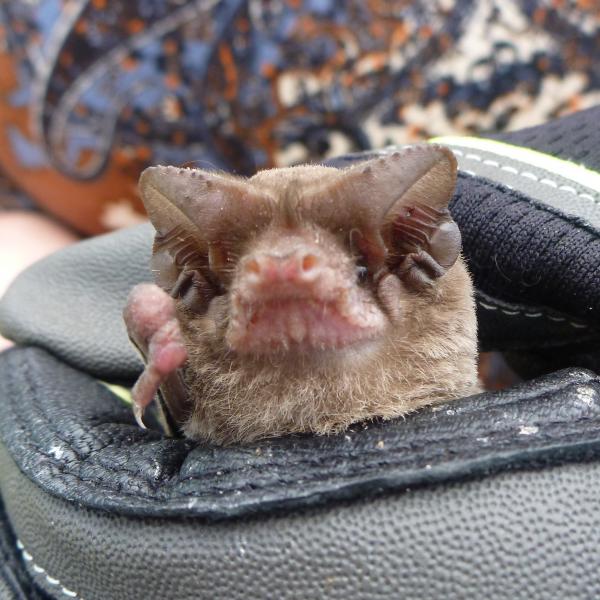
Mexican Free-Tailed Bats
(Tadarida brasiliensis)
Native species
- Reddish to dark brown fur
- One of the most abundant mammals in North America
- These bats' tails extend much further beyond their tail membrane than other bat species — hence their name
- Like to roost in large numbers, some roosts in the southern United States are known to contain millions of bats
- Young free-tailed bats roost separately from their mothers in the highest parts of the cave where temperatures are the warmest
- Fast! Can fly horizontally at a ground speed of over 99 mph
Other bats that can be found in Midpen preserves include California myotis, pallids and big browns.
Echolocation
Watch this short video to learn how bats communicate using echolocation.

